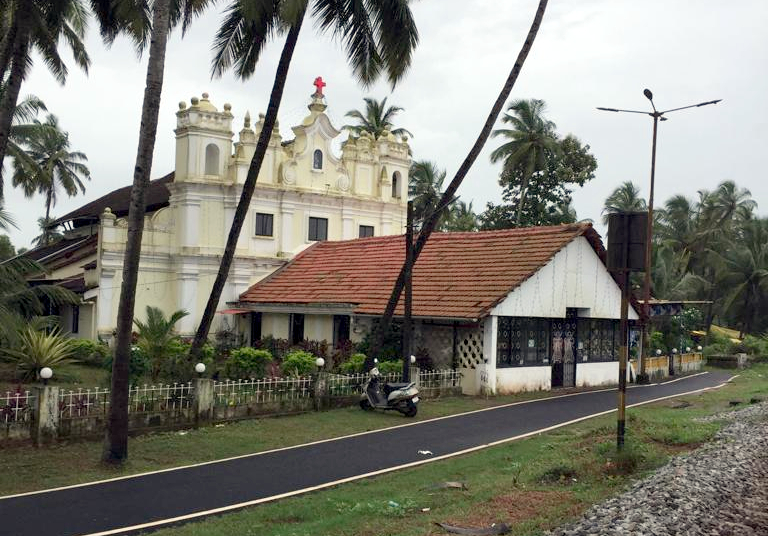
The St Thomas Church in Cansaulim has two 16th century chapels under its jurisdiction, the Our Lady of Remedios at Cuelim Hill, where the famous feast of the Three Kings takes place in January, and the St Lawrence Chapel at Arossim, which celebrates its feast on August 10.
THE HISTORY
The tiny scenic chapel surrounded by fields was located in an isolated area, as the nearest home was about 75 metres. Hence, it was aptly called the ‘Hermitage of St Lawrence.’ There are no clear records regarding the year of its construction. According to one account, it is said to have been constructed between 1598 and 1600, by Fr Gonçalo Carvalho, a Jesuit priest, who was then the vicar of St Thomas Church in Cansaulim. Another account states that the chapel was constructed in 1589 and reconstructed in 1784.
The map of Old Goa Conquest of 1610, drawn by the cartographer Emmanuel Godinho de Eredia, depicted the chapel as Ermida de S I in Arocim – ‘Hermitage of St Lawrence.’ Like most of the chapels of the past, it was built of mud walls with a thatched roof.
Due to its location, it was hardly visited by people except by passers-by who would halt to pray. Mass would be celebrated here occasionally on Sundays by the parish priest of Cansaulim or by Jesuits who were on a vacation at the summer house in Arossim and much later, by the locals who were ordained priests. The first recorded pastoral visit to the chapel was by Archbishop D Antonio Sebastiao Velente on December 13, 1893.
THE DEVELOPMENTS
The chapel has undergone changes since its existence due to its neglect and vandalism. It was renovated and restored to its former glory, first in 1783 and then to accommodate the growing population, it was expanded in 1863 and again in 2001.
In 1897, a residence for the chaplain was built at its rear side. Fr Antonio Maria Reduzinho Rodrigues, a local, was the first chaplain posted here. On the occasion of its 400th anniversary, a new residence for the chaplain was built and the nave of the chapel was expanded laterally, to accommodate the increasing population.
The other developments were in the surrounding area, where in 2005, a pavement of the patio was done and the retouching of the façade in 2007. Then to indicate the rebuilding of the chapel, a granite stone was inserted in the exposed wall below the bell tower.
On June 15, 1952, the Cofre of Arossim (the Chapel Treasury) decided to expose the Blessed Sacrament permanently on the feast day of the Saint, the cost for the oil to keep the lamp burning would be borne by the Communidade of Arossim. Down the years, individuals have come to bear this cost.
THE INTERIORS
The Kharvi (fishing community of Arossim) donated 12 chandeliers to the chapel which are suspended from the ceiling of the chapel. The main altar of the chapel was glazed with tiles and marble steps and its cost was borne by Canon Alexandra Pereira de Andrade.
The cost of the frames around the nave of fourteen Way of the Cross was borne by Fr Lourenco Antonio Saldanha. Delfina da Costa e Fernandes offered the statue of St Lawrence enclosed in a glass case placed at the pinnacle of the Chapel façade.
THE FEAST
Until recently, the president of the ganvkars of the 8 vangodds would celebrate the feast of the patron of the chapel, on rotation. But due to high costs, the expenses are now shared equally by members of each vangodd. This cycle is repeated every 7 years. The nine-day novena precedes the feast.
Before the Mass on the Feast Day, the faithful gather at the chapel grounds. Since it is the time when the harvest is ready for reaping, an old ritual called the Novidade or Novem of the place is followed to this day. The priest blesses the harvest and then cuts the sheaves. After the Mass, a solemn procession of the Blessed Sacrament is held, which now is confined within the walled area on the north side of the chapel.
(The writer is Superior at Casa Professa, Basilica of Bom Jesus in Old Goa)